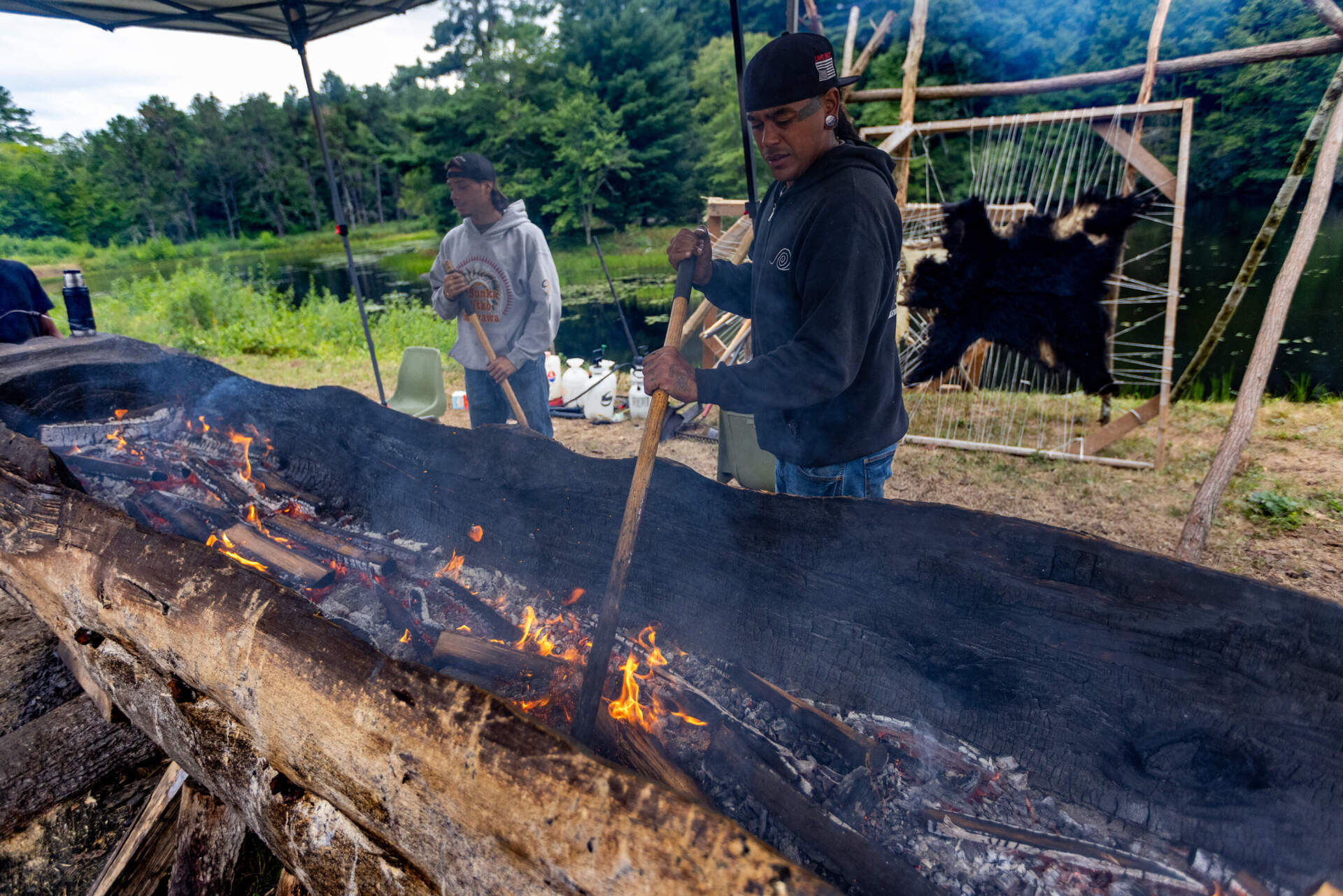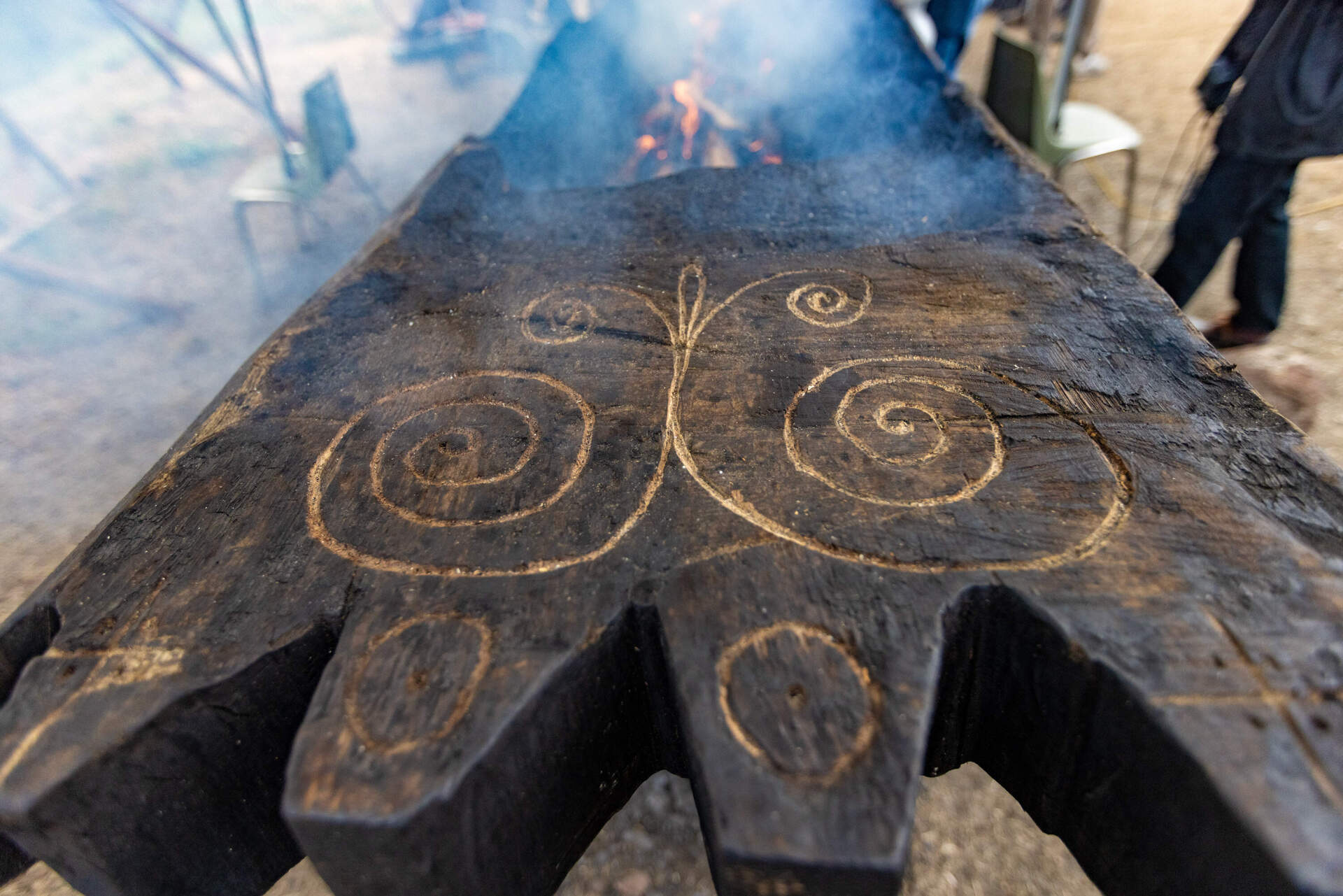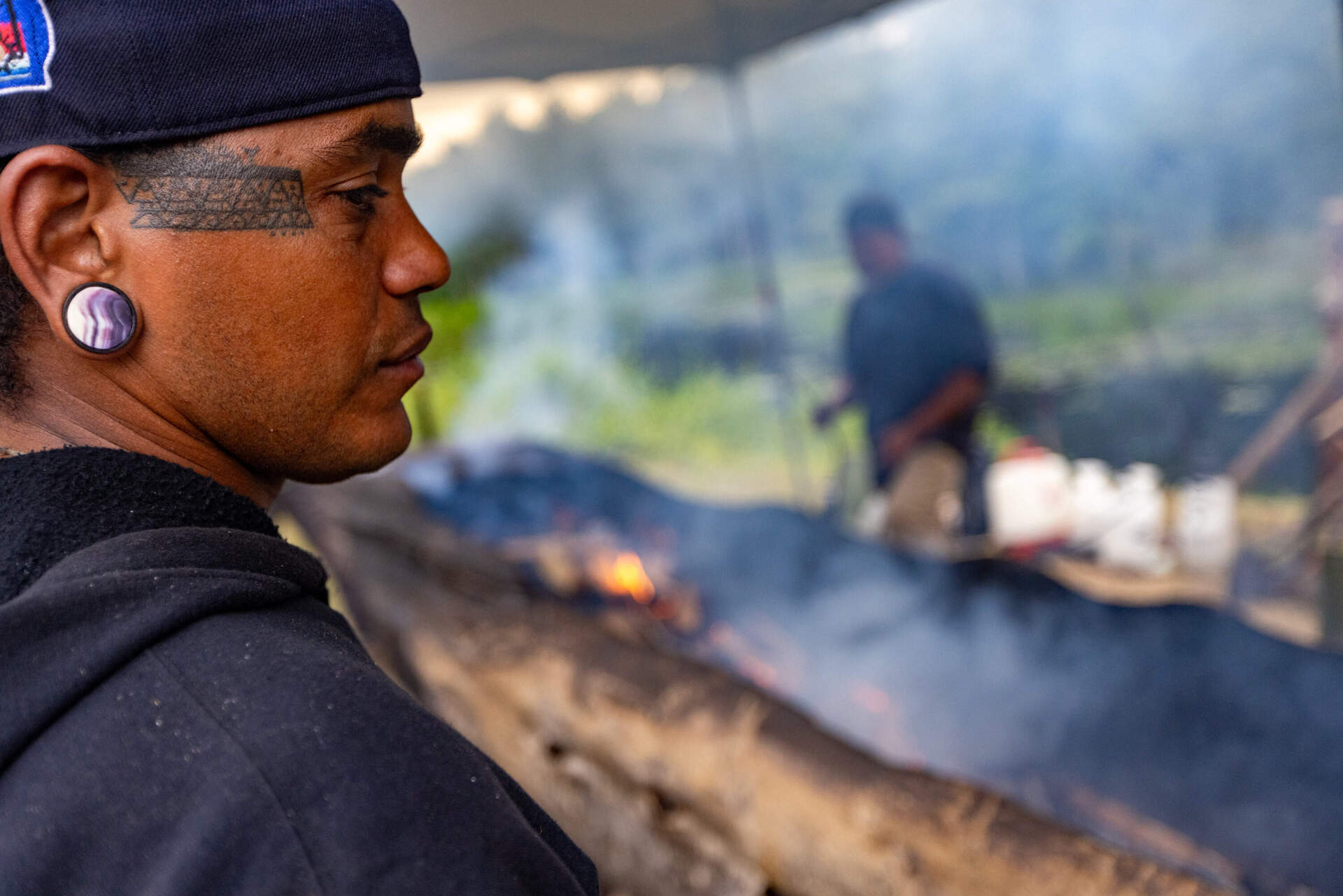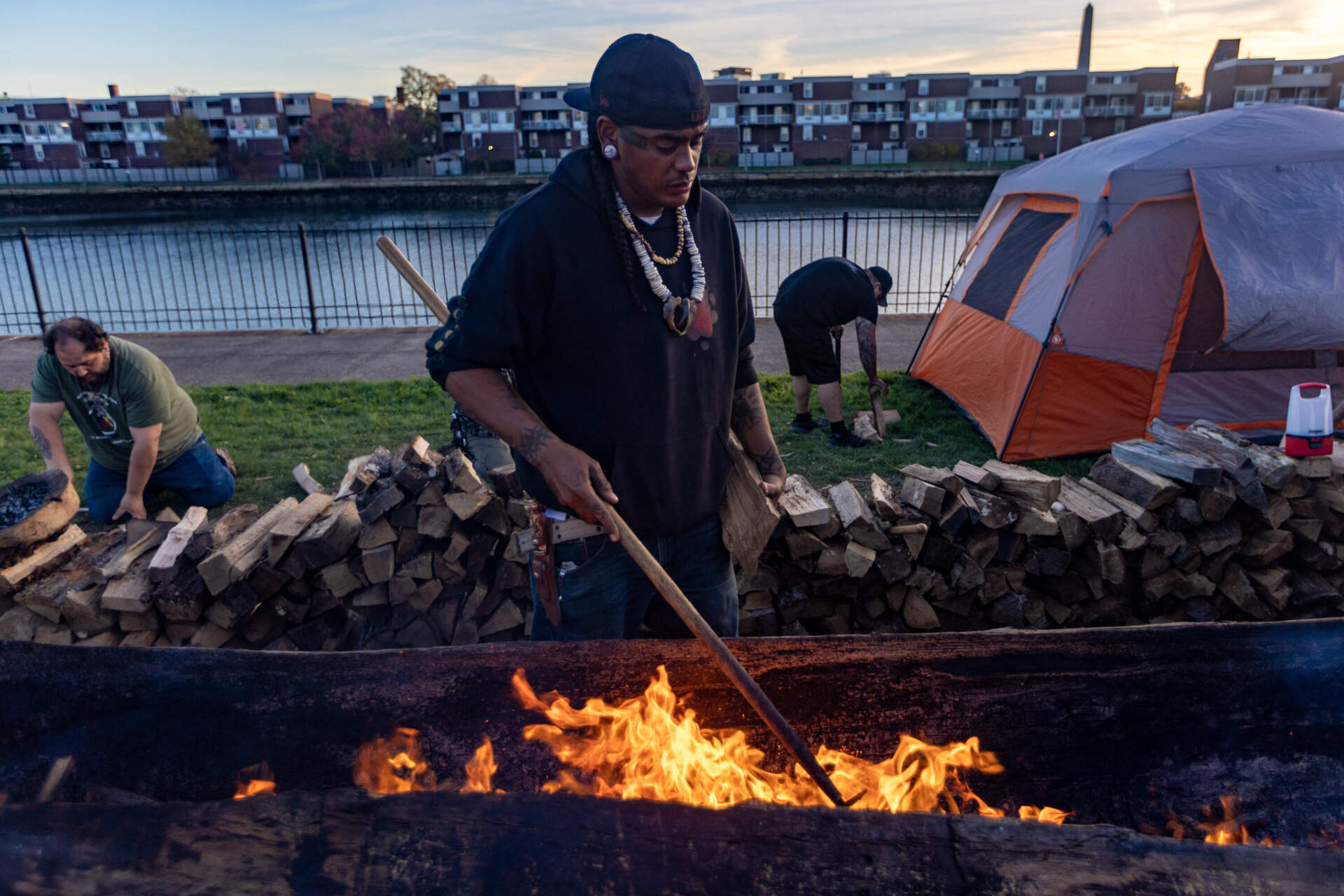As rain pelted down on the Norcross Wildlife Sanctuary in Wales, Massachusetts, Andre StrongBearHeart Gaines-Roberson Jr. took a garden hoe to a burning log.
The 24-foot-long section of a huge white pine tree had been hollowed out by a smoldering fire over several days. Still, a few stubborn spots burned slower than the rest.
“It’s called a dugout canoe, so you’ve got to do some digging out,” StrongBearHeart quipped.
The dugout canoe in question was a mishoon, a type of watercraft traditionally made by Eastern Woodlands tribes by burning out the center of a massive log. StrongBearHeart, a Nipmuc cultural steward, was overseeing the burn, which required round-the-clock attention. His eyes were bleary from smoke and lack of sleep.
He insisted the long, dreary work was worth it.
“ We’re creating some cultural revitalization for our community, a sense of place,” StrongBearHeart, 40, said.

The site of the mishoon burn was next to a pond inside the wildlife sanctuary, accessible by a picturesque trail that wound through the woods, across a meadow and over a boardwalk. Signs along the path pointed visitors toward “Mishoon Camp.” Even on a rainy morning, a few people found their way to the cluster of tents and tables where StrongBearHeart and several others tended the mishoon.
“How do you decide which end is the front and which end is the back?” asked one visitor, who introduced herself as an employee of the Worcester Art Museum.
StrongBearHeart quickly pivoted into host mode. He chatted about the stone-tipped tools traditionally used to carve the mishoon, then deftly steered the conversation toward a more serious topic: the issue of Indigenous artifacts held by museums. Almost nonchalantly, he wondered if it might be more appropriate for Indigenous people to put the ancient stone tools to use.
“Our ancestors made them to use them. Instead, they’re sitting in baskets, hundreds of them,” StrongBearHeart said. “ I understand about preservation, especially as a historic preservation officer. But I think when there’s an abundance of something, I say we don’t have that problem.”

StrongBearHeart is used to playing the role of cultural ambassador. He serves as the Tribal Historical Preservation Officer for the Hassanamisco Tribe of Nipmuc Nation, and is the founder and creative director of the nonprofit No Loose Braids. The organization teaches Indigenous cultural practices and land stewardship. StrongBearHeart’s work takes him all over the country, where he leads workshops for Indigenous communities on a wide range of skills, from traditional song and dance to processing animal hides and building traditional homes.
“Teaching, for me, is deeply significant,” StrongBearHeart said. “I like to watch the spark in people’s eyes when they learn something, like taking a tree down and making a dugout canoe, or turning a deer skin into something they can wear.”
The natural resources needed to teach these skills can be hard to come by, as they are often found on land controlled by trusts or state agencies. As a result, much of StrongBearHeart’s work with No Loose Braids involves advocating for Indigenous communities to be able to access, and even help manage, conservation land.
“You ask a conservationist in Massachusetts, and they know who Andre StrongBearHeart Gaines is,” said Jennifer Albertine, the climate and land justice director at Mount Grace Land Conservation Trust.

Albertine met StrongBearHeart five years ago through her work with Mount Grace. It was part of an effort to repair the harms of colonialism, which nearly decimated the Nipmuc people through a combination of war, disease and land theft. No Loose Braids is in the process of conducting cultural inventories on Mount Grace’s dozens of parcels, to help the trust understand what resources are important from a Nipmuc perspective: birch trees, for instance, or certain medicinal plants. Though, StrongBearHeart said, the work goes deeper than just counting things.
“It’s that viewpoint of living in relationship to the land,” he explained. “We see the trees and these medicine plants and these animals as relatives, not as profitable margins or wood lots in the way that a lot of state municipalities see land.”
StrongBearHeart’s efforts have helped bring attention to the dwindling supply of Atlantic white cedar trees in Nipmuc territory. The cedar saplings are used to build the Eastern Woodlands tribes’ traditional dwellings, called wetu. Now, thanks to the advocacy of No Loose Braids and Mount Grace, the state is assisting in an effort to rehabilitate a white cedar swamp in Monson. The effort has brought together an array of scientific experts, from botanists to hydrologists, as well as multiple land trusts, state agencies, and Nipmuc organizations. The team is developing a framework to guide conservationists interested in undertaking similar work.
“Statewide, he’s had such an impact for land trusts that are mostly white-led,” Albertine said of StrongBearHeart. She felt he had a gift for delivering his message. “It’s coming from his heart. And so people hear him.”

The work isn’t easy. A few years ago, StrongBearHeart helped organize a mishoon burn in Charlestown. It was celebrated in the press, but the undertaking itself was a struggle.
“It took five months to get an approval to do it. It was an actual nightmare,” StrongBearHeart said. But, he added, “It’s important for me to push through those barriers, to show these young ones you can be who you are here.”
Ultimately, StrongBearHeart wants to reclaim Indigenous land. He hopes a new venture, the Nipmuc Community Land Project, can acquire land for tribal use. He imagines a place that would provide tribal housing and other services — land on which they could build something of their own.

